Christian Schmidt and Heinrich Stoll
There were many good things to come out of 1906. There was the Rolls-Royce Silver Ghost, Einstein's General Theory of Relativity and ... NSU’s first automobile. But when the company was first established, the motorcar was a thing of the future. In 1873, the two Swabians who established a workshop in Riedlingen, Christian Schmidt and Heinrich Stoll, were keen to get into the manufacture of another kind of technical innovation, namely knitting machines. Within three years, Schmidt was looking for a better place, because there was no room for expansion of the workshop in Riedlingen, which was on an island in the Danube.
Neckarsulmer Radwerke
Finding a suitable spot in Neckarsulm, he went there, leaving Stoll behind. It was a time when a lively mechanical engineer could profitably be enterprising, and with the bicycle becoming an accepted form of transport, the works became a bicycle factory, and in 1886 was christened the Neckarsulmer Radwerke. Shortly, the little firm made its first contribution to car manufacture, as a supplier to the great Gottlieb Daimler, who fitted his engines into Neckarsulm chassis. By 1892, something else came out of Neckarsulm - the three letters NSU, which were adopted as a brand name.
It became well enough known to be worth exploiting when the firm began building motor cycles. This was in 1900, just before the basic shape of the modern motor cycle was established by the New Werner; the NSU designs could accordingly be dismissed as mere motorised bicycles, but they were no less popular on that account, and the demand for them was greater than the production capacity of the factory. This could have been remedied, as by this time NSU were very successful, but evidently preferring the security of diversification to the hazards of specialisation, they embarked on car manufacture, starting in 1905 by building Pipes under licence.
The Prince Henry Trials
The following year the first car of their own design appeared, a four-cylinder affair known as the 6/10 PS (the abbreviation was for the German equivalent of horsepower), shortly accompanied by a 15/24 PS. NSU chose to produce essentially ordinary, albeit sound, touring cars, and they soon learned that there was a worthwhile demand for relatively small and light vehicles. They were accordingly tempted to experiment with a two-cylinder 1100cc device in 1909, but it was the fours that made the best impression in that year, contriving to complete the course of the Prince Henry Trials in which it had been thought that only large and powerful vehicles had any chance of success. The three NSUs took part and finished the tour without any kind of breakdown, attracting a lot of favourable comment.
Encouraged by their success in the Prince Henry Trials, the company developed a new small car that was to be a notable success, the 5/12 PS, which was designed for quantity production. With its four-cylinder engine of 1163 cc, it was a true motor car in miniature, following the ten-year-old example of the Bebe that Bugatti had designed for Peugeot, which endeared itself to a public suspicious of cycle cars. Progressive development made it into a 5/15, and then 5/20, the car remaining very popular for ten years.
There had been some bigger NSUs with 2.6 and 3.3- liter engines, but in post-war Germany large cars were at a discount and small ones at a premium. The 1.3-liter 5/20 and the six-cylindered 1.6-liter 6/30 PS sports models were light and lively enough (despite their side-valve engines) to perform quite respectably, and the significance of their sporting successes was not lost upon the general public. The 75 mph win of the 5/15 NSU in the 1923 Avusrennen, in which a team of three cars from the Neckarsulm factory finished in a space of only 42 seconds after more than an hour's racing, brought particular praise.
n
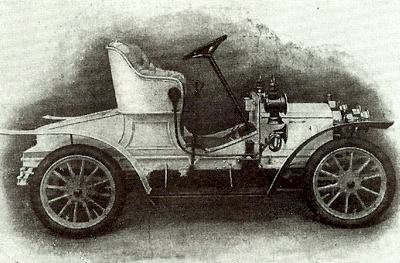 1906 NSU 6/10PS, the very first NSU, powered by a 4 cylinder engine.
1906 NSU 6/10PS, the very first NSU, powered by a 4 cylinder engine.
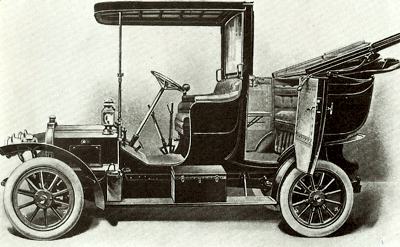 1908 NSU 10/20PS Landaulette, fitted with a four-cylinder engine.
1908 NSU 10/20PS Landaulette, fitted with a four-cylinder engine.
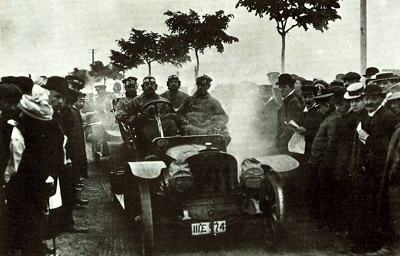 1908 NSU 10/20PS, competing in the Prince Heinrich event.
1908 NSU 10/20PS, competing in the Prince Heinrich event.
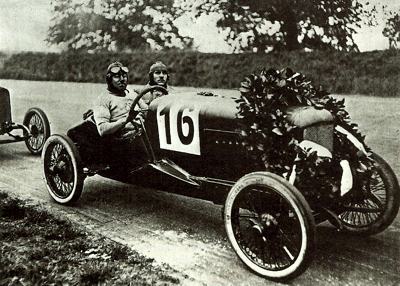 1923 1.3 liter NSU after winning a race at Avus.
1923 1.3 liter NSU after winning a race at Avus.
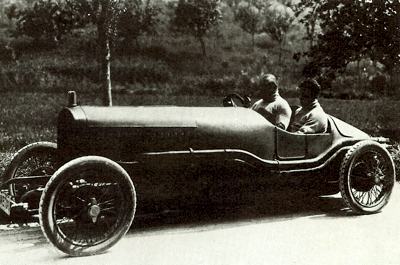 1926 NSU 1.5 liter racer, which competed in the German Grand Prix.
1926 NSU 1.5 liter racer, which competed in the German Grand Prix.
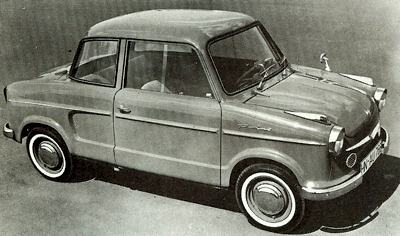 1958 NSU Prinz, powered by a twin-cylinder 20bhp engine.
1958 NSU Prinz, powered by a twin-cylinder 20bhp engine.
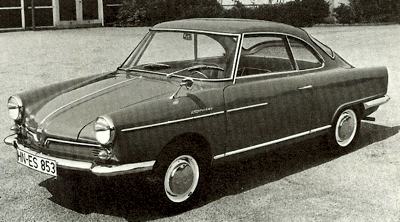 1958 NSU Sport Prinz, with bodywork by Bertone and more powerful 30 bhp engine.
1958 NSU Sport Prinz, with bodywork by Bertone and more powerful 30 bhp engine.
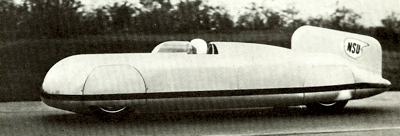 NSU 500cc record breaker.
NSU 500cc record breaker.
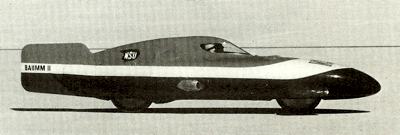 NSU 2 wheeled 'Flying Hammock', which tool the 50cc record at a speed of 121.9 miles per hour at Bonneville Salt Flats, Utah.
NSU 2 wheeled 'Flying Hammock', which tool the 50cc record at a speed of 121.9 miles per hour at Bonneville Salt Flats, Utah.
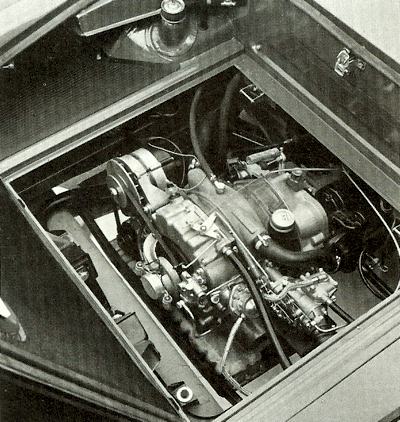 NSU Single Rotor engine.
NSU Single Rotor engine.
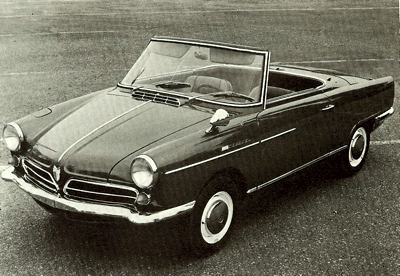 1963 NSU Spyder, the first production Wankel engined car ever.
1963 NSU Spyder, the first production Wankel engined car ever.
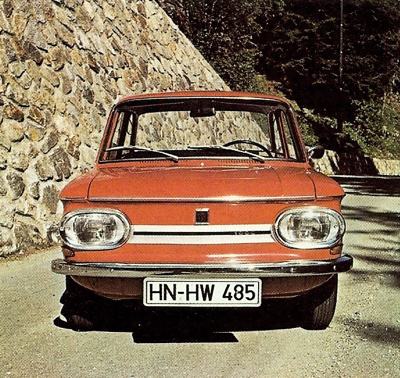 1972 1000cc NSU Prinz.
1972 1000cc NSU Prinz.
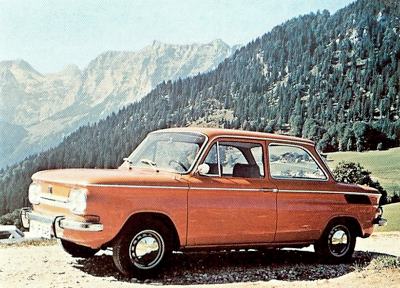 NSU Prinz 1000TT, powered by a 65 bhp engine.
NSU Prinz 1000TT, powered by a 65 bhp engine.
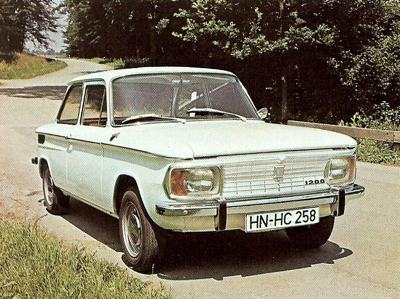 NSU Prinz 1200, powered by a 55 bhp engine.
NSU Prinz 1200, powered by a 55 bhp engine.
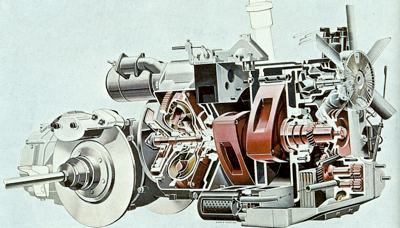 2-Rotor Wankel engine which powered the Ro80.
2-Rotor Wankel engine which powered the Ro80.
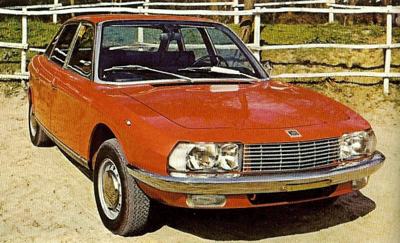 The brilliant NSU Ro80.
The brilliant NSU Ro80.
|
Nevertheless, it was the six-cylinder car that perhaps did best of all in 1926, again on the Avus track, where the German Grand Prix was held. The small class was convincingly swept up by the NSU team, which finished first, second, third and fourth, the winning car of Kloeble averaging 126 kph, only nine less than the masterly Caracciola achieved with his straight-eight supercharged Mercedes in the larger class.
The 6/30 was also available from the factory in supercharged form with a Roots blower overcoming the strictures of side-valve breathing. Anything so nearly resembling a gay life was doomed to be a short one at that time in Germany, when economic difficulties were assuming proportions that made the worldwide slump seem comparatively tame. In an excess of optimism, NSU had built a brand-new car factory at Heilbronn, where they had had some kind of plant since 1910.
NSU-Fiats
However, having been forced to stop car production temporarily in 1929, they were content to sell the Heilbronn works to Fiat and to cut ties with the car market completely. The cars built there by Fiat from 1930 onwards were called NSU-Fiats, the company being incorporated as NSU-Automobil AG. The first car to be produced there was the 2
½-liter Fiat 521, followed by the 508, 1500, 508e and 500 - the last, the famous Topolino, being offered not only with the standard Italian bodywork, but also as a sports two-seater or a drophead coupe.
After the intervention of World War 2 the new German Fiat subsidiary began to sell cars imported from Italy, while the factory at Heilbronn was used to assemble certain models not only for Germany but also for export. These export versions were sometimes special ones not to be found elsewhere in the Fiat catalogue: based on the 500 were the NSU-Fiat Weinsberg two-seater coupe and Limousette, the 850 Adria saloon, and the Vignale-bodied spider and coupe versions of the NSU-Fiat jagst 770 Riviera. These and other NSU-Fiats continued in production until 1959, but in the previous year NSU decided to take up car production again, and sparked off a row with Fiat about the use of the brand name NSU on cars.
Neckars
It was a dispute that took a long time to settle: NSU-Fiat changed their name to Neckar in 1959, but were allowed to continue marketing their cars under both names, until finally in 1966 the Italian-controlled company relinquished all claims to the name of NSU and thereafter remained content to brand all their products as Neckars. It would not be strictly true to say that NSU made no cars between the sale of their Heilbronn works to Fiat in 1929 and their resumption of the business in 1958. One or two are believed to have issued from Neckarsulm in 1930, but of greater interest to the historian is the fact that in 1934 the same factory produced three prototypes of the KdF Volkswagen under the direction of Dr Ferdinand Porsche.
Nevertheless, their speciality in the decades immediately before and after the war were motorcycles. The resurgence of the German automotive industry under the National Socialist Regime has been well enough chronicled, in particular the encouragement given to Auto Union and Daimler-Benz by the Nazi Government to embark on a lavish racing programme as a public-relations exercise on an international scale. The same thing applied, albeit on a more modest scale, and a more straightened budget, to motorcycles.
Thus, in 1935, after only two years under the Chancellorship of Hitler, a very interesting motorcycle show at Berlin included a promising pair of overhead-camshaft NSU racers. By 1939, NSU had caught up with the supercharging trend, and they offered a substantial challenge to the opposition in the 350cc class in 1939 with a supercharged parallel twin. It was perhaps too substantial, as the machine weighed nearly 50lb more than the BMW works 500 racer, and was burdened by another 50 lb of fuel to slake its immoderate thirst. Nevertheless, it provided the engineering basis for a run of motor cycles that after the war was to be immensely successful.
The World Speed Record for Motorcycles
Like so many others, the NSU works was substantially damaged by air raids in the last part of the war, but new modern workshops were in production by 1949. Two years later, Wilhelm Herz was riding a blown 500cc NSU at 290 kph to take the absolute world speed record for motor cycles. The supercharged NSU was a prodigious performer in domestic race meetings, where the Germans still revelled in supercharging, but in international events forced induction was banned, and it was confidently assumed that the leadership in unblown engines asserted by Norton in the 1930s would remain with the British for years to come.
NSU set about making un-supercharged engines for international racing at the highest level however, and came up with a design that must have been one of the most scientifically devised of the era. The bicycle part itself was beautiful enough, exquisitely made and superbly detailed in its backbone frame, enormous brakes and streamlined fairing. However, most important, it boasted an engine that in terms of volumetric efficiency was without peer.
The Rennsport NSU
The Rennsport NSU was the first, and for a long time the only, unblown petrol motor developing 125 bhp per liter. In 250 and 125 cc categories, these twin-overhead-camshaft, twin-cylindered machines brought NSU the World Championships on at least four occasions and, incidentally, furnished the technical inspiration for the first serious high-grade Honda motor cycles. In common with several other firms, NSU pulled out of motor-cycle racing in the mid 1950s (their brilliant team leader, Werner Haas, was killed in a flying accident in 1956) and, although their sporting motor cycles remained in production for some time thereafter, they became best known for their mopeds, the NSU Quickly at one time enjoying an enormous vogue.
Gustav Baumm's Flying Hammock
As though to lend weight to their marketing campaign, NSU embarked on a series of record-breaking sessions with an extraordinary motorcycle, a slim, low, cigar-like projectile known as 'Gustav Baumm's flying hammock', the designer lying between the wheels. Behind him was a tiny NSU engine which somehow managed to propel this admittedly ultra-refined and very aerodynamic vehicle at enormous speeds. The most extraordinary result of all was with the smallest engine: on the Bonneville Salt Flats in Utah, the Baumm streamliner shattered the 50cc record with a speed of 196 kph (121.9mph).
To try and keep some kind of sense of proportion, NSU fielded a rather more conventional faired motor cycle to take the absolute, two-wheeler record, their blown 500 becoming the fastest motor cycle in the world at 339kph. NSU were very careful, however, to keep quiet about the inconspicuous supercharger that gave both these machines their outstanding performances. Due credit belongs to the aerodynamics of the Baumm fairing, as the 50cc record was taken with a power of only 12.8 bhp - but that, from what was tantamount to a well made moped engine, was equivalent to 256 bhp per liter.
The secret was the belt-driven supercharger which could deliver air to the engine at pressures up to 8 atmospheres (120 lb/sq in) with an overall adiabatic efficiency exceeding 70%. In fact, for the record, the boost pressure was limited to 45 Ib/sq in, and this sufficed to increase the power output of the NSU quickly by a factor of about 8. The reason for the secrecy was not simply the high boost pressure, but the manner in which it had so efficiently been attained: the supercharger was an early prototype of what was to become the Wankel engine, and bring NSU enormous fame and crippling problems.
The Wankel Rotary
In 1957, the first engine based on Wankel's rotating machinery ran in the Neckarsulm factory and, in another part of the works, the first Prinz car was built. The time was right for an efficient light car, as it had been in the corresponding period after World War 1; and, just as NSU had been able then to find a ready market for their four-wheelers, so they were again. Germany was still struggling hard to complete her 'economic miracle', and in the midst of the 1950s most domestic car manufacturers concentrated on miniature cars that ought to achieve miracles of economy.
The Age of the Bubble Car
It was the age of the bubble car, and with all their expertise in motor-cycle engines to draw on, NSU felt competent to compete. The fact that they also had Fiat in what used to be their factory, making a new air-cooled, two-cylinder miniature car, and apparently making a success of it, must have been influential too. The Prinz that went into full production in 1958 was a skilful piece of mechanical design. Its engine was in the tail, but was very light, being a small air-cooled twin of only 598cc displacement. It was graced with an overhead camshaft to work its inclined valves in hemispherical combustion chambers, and the drive to the camshaft was by eccentrics and straps (as in the NSU Sportmax motor-cycle, and the Speed Six Bentley) so as to combine quietness and accuracy.
The NSU Prinz
To this fan-cooled engine add an all-synchromesh gearbox and all-helical final drive sharing a common casing and lubricant with the crankshaft, and it was apparent that this was to be a small car that was a little out of the ordinary. When, despite all-independent suspension that relied on swinging half-axles at the rear, it turned out to have exceptionally good cornering and handling, the Prinz was seen to be more than a little extraordinary.
Once it had been rebodied in a style as characteristic of Michelotti as the original shell had been typical German revivalist stuff - the Prinz became internationally popular. This was something that never truly happened to any of the other little wonders of the epoch, the Lloyds and the Goliaths and so on; the difference was that the NSU's behaviour on the road made driving it a matter for fun rather than shame.
The Bertone NSU Sport Prinz
If any European firm built a car that might be considered its equivalent, the NSU would outperform it on less petrol. With 30 bhp in barely half a ton of car, it was lively enough; and developments of the Prinz kept NSU active in the light-car business for a decade and a half. The Sport Prinz was a popular and well shaped pseudo-GT creation by Bertone; the 1000 and the 1100 were what the Prinz 4 was not, which is to say four-cylindered; and the TTS, a 1967 uprating of the 1000, was a rorty rally car, capable of 95 mph on its standard 70 bhp and of being tuned to much higher levels of speed, power and noise.
These Sport Prinz's were amazing cars to drive. The gearchange may have been remote and indefinite, but changes were fast and could be done easily without using the clutch. The engine might be heard, but could not be felt, as it spun freely in the tail, and there was no question of the car feeling tail-heavy: it did not, it was not, it simply responded very positively to all controls, including high-geared steering. It was neutral, and it was almost unbelievable. It could not make up for the general air of utilitarianism in the car as a whole, however; and as the fashion for conspicuous consumption and corporeal indulgence gathered strength with the Deutschmark in the late 1960s, so the appeal of the little 'bathtubs' waned.
Dr Ing Waiter Froede
By that time, NSU were actively campaigning in another sector or two, as the name and fame of the Wankel engine became identified with them. Their first contact with Felix Wankel had been in 1951, when their head of research - the brilliant Dr Ing Waiter Froede - wanted information about the sealing arrangements for some rotary valves that had preoccupied Wankel during the war. Wankel had used rotary-disc valves for torpedo engines; Froede wanted to do the same for a racing motor cycle.
The agreement into which Wankel and NSU entered was originally aimed only at this particular sealing problem. It was- early in 1954 that Wankel realised how the four-stroke cycle could be enveloped by an epitrochoidal bore containing an equilateral rotor. It was 1956 when, as already related, a compressor based on Wankel's ideas blew a moped engine into a record-breaker. A year later, Froede had accomplished the intellectual feat of turning the relative motions of the rotating inner and outer members of this machine inside out, to create the simple definitive Wankel engine.
Wankel and NSU became more and more enmeshed. When news of the new engine broke, NSU became the prey of stock-market speculators, bankers and patent lawyers. Fortunes were made and lost. Perhaps NSU were too small to handle the Wankel engine and all that lay implicit in it. Certainly they were slow in developing a Wankel-engined car that only by some hasty work in the small print department did they avoid being beaten by their own licencees Toyo Kogyo, whose Mazda prototype was deferentially held back a month so that the NSU Wankel Spyder might have the world to itself.
The NSU Wankel Spyder
This was 1963, a year before the car actually went into production and three years after work had started. The car was an open version of the Bertone Sport Prinz, but with the engine replaced by a single-rotor Wankel engine giving 60 bhp and demanding free use of the somewhat inadequate gearbox. All the traditional roadworthiness was there in abundance, however; so after the novelty had abated, and the people who are attracted by novel things had gone off after something else, a number of serious-minded Germans and middle-Europeans began to treat the
NSU Spyder as a serious competition car.
Karl Heinz Panowitz
With a tuned engine it did well on hill-climbs and in short circuit races, while in 1966 its rallying potential was confirmed when it carried Karl Heinz Panowitz to the German GT Rally Championship. That sporting triumph was a notable rarity for the busy, overburdened, overenthusiastic new NSU Motorenwerke. The name had been revised in 1959, when Prinz and Sport production was just into full swing; in 1966 the half-millionth NSU car since the resumption of production at Neckarsulm left the factory.
Mopeds apart, the motor cycles were almost forgotten: the company was anxious to rid itself of these associations, even to break free of the reputation for slightly zany economy-class miniatures. The new versions of 1967, the high-performance 1200 TT and the competition-oriented TTS, would only be around for a limited life. It was time for the great definitive Wankel-engined car to emerge and show the world what the future held in store.
The NSU R080
At the Frankfurt motor show, in the summer of 1967, the
NSU R080 made its first public appearance. It had a twin-rotor Wankel engine in a superbly shaped and roomy saloon featuring front-wheel drive, power steering, a converter coupling and three-speed synchromesh gearbox with automatic clutch, arid every feature calculated to win and keep the regard of discerning and discriminating motorists. Its stability, roadholding, ride, steering, handling and braking were exceptional in its class and in its day; its smoothness and quietness were exceptional in any company.
It had an air of being the world's only truly modern motor car. Without doubt the
R080 deserved all its acclaim. Without the Wankel engine it could not have had the same proportions, the same grace, the same balance or even the same performance. Maximum speed was supposed to be 112 mph, but if allowed to overspeed it might reach as much as 130 on a long autobahn. As for acceleration, it was a shade slow in typical automatic style up to 30mph, but from there on it was a match for many sports cars.
There was one problem however, people would over-rev it - or they would confine it to short town trips, or abuse it in other ways. The engine gave trouble. NSU gave their warranty the most generous interpretation of any in the industry, bleeding themselves dry to keep faith with the Wankel and with their customers. They set very high standards for themselves as well as for others - but the others would never have tried to observe them.
The development 'in the customers' hands' of the
R080 engine was long, painful and expensive. By 1972 it had been completed: the engine was now at least as reliable as any conventional one. It was demonstrably easier to match to new pollution laws, despite the smear campaign of rival manufacturers. Then the world changed direction. Fuel consumption suddenly became crucial, and this was not the Wankel's forte. The
R080 was still, all those years after its introduction, one of the very best cars in the world; but people seemingly did not wish to know. The men at Neckarsulm knew, but they were not their own masters: in 1969, NSU were taken over in a complicated deal that linked them with Audi in subjection to Volkswagen.
The NSU VW K70
The VW K70 was an NSU designed as an economic piston-engined parallel to the
R080, but there was evidence enough as to how vital the engine was to the whole car. The K70 handled with an ineptitude rivalled only by the harshness of its engine; the car's appeal was superficial. Its eventual demise was sealed when VW's new front-drive generation emerged all-conquering in 1975. In 1977, now prohibitively expensive, the
R080, one time Car of the Year, stepped-down, taking with it a fascinating chapter in automotive history.
Also see: NSU Car Reviews 